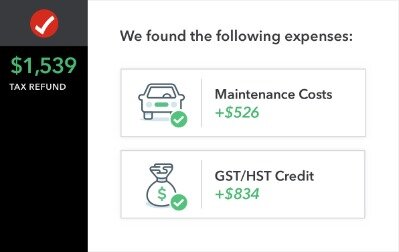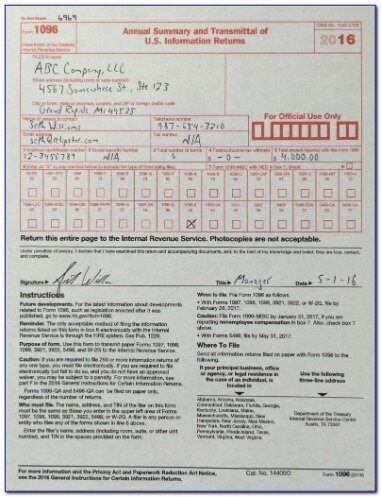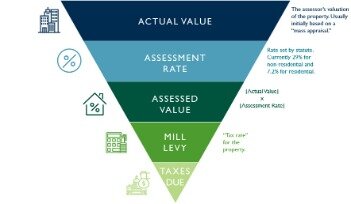Contents:

In this example, the sales journal cost of each of these units would equal $3. The change in total cost is simply the amount spent to produce the extra unit. Similarly, a change in quantity is the number of additional units produced. The change in quantity of units is the difference between the number of units produced at two varying levels of production. Marginal cost strives to be based on a per-unit assumption, so the formula should be used when it is possible to a single unit as possible. For example, the company above manufactured 24 pieces of heavy machinery for $1,000,000.

It is often seen that education is a positive for any whole society, as well as a positive for those directly involved in the market. Of great importance in the theory of marginal cost is the distinction between the marginal private and social costs. The marginal private cost shows the cost borne by the firm in question.
While AVC declines at first and increases as output rises, the marginal cost reflects the additional cost incurred to produce each unit and generally follows a U-shaped curve. In the second year of business, total costs increase to $120,000, which include $85,000 of fixed costs and $35,000 of variable costs. As we can see from the marginal cost curve below, marginal costs start decreasing as the company benefits from economies of scale. However, marginal costs can start to increase as companies become less productive and suffer from diseconomies of scale. It is at this point where costs increase and they eventually meet marginal revenue.
To determine the changes in quantity, the number of goods made in the first production run is deducted from the volume of output made in the following production run. Financial ModelingFinancial modeling refers to the use of excel-based models to reflect a company’s projected financial performance. Manufacturing Overhead FormulaManufacturing Overhead, also known as Factory Overhead, refers to all the indirect factory-related costs incurred in the product manufacturing process. This might be in order to get rid of stock that is going out of date, or, to attract customers to purchase cheap goods. Whilst in the store, the idea is that they would also purchase other products that offer the firm a profit. John Monroe owns a privately owned business called Monroes Motorbikes.
ATC (Average Total Cost) Calculator
The average cost is important for firms since it shows them how much each unit of output costs them. Enter your email and we’ll send you this exclusive marginal cost formula calculator in Excel for yours to keep. Below we break down the various components of the marginal cost formula. Average total cost is used to identify a breakeven price – the price that, if all units sold, would result in no financial loss and no financial gain.

Consider the warehouse for a manufacturer of landscaping equipment. The warehouse has capacity to store 100 extra-large riding lawnmowers. The margin cost to manufacture the 98th, 99th, or 100th riding lawnmower may not vary too widely.
Average Fixed Cost Formula
They compute their contribution margin as sales revenue minus variable costs and use it for product pricing decisions. Break even point analysis provides a clear picture of when the company covers its variable and fixed costs through revenue generation. Marginal cost is a microeconomics concept that businesses adopt to determine cost-effective production or service levels in the short run. In inflationary times, monitoring marginal costs in your company and devising strategies becomes even more vital.
Doubling your production won’t necessarily double your production costs. If you can negotiate a discount from your materials supplier on a larger order, your per unit cost might go down. On the other hand, if you need to move into a larger facility or purchase new equipment to produce additional goods, your average cost per unit might go up.
Five ways the state can help downtown – Indianapolis Business … – Indianapolis Business Journal
Five ways the state can help downtown – Indianapolis Business ….
Posted: Fri, 17 Feb 2023 08:00:00 GMT [source]
Marginal cost is reflective of only one unit, while average cost often reflects all unit produced. Marginal cost is often graphically depicted as a relationship between marginal revenue and average cost. The marginal cost slope will vary across company and product, but it is often a “U” shaped curve that initially decreases as efficiency is realized only to later potentially exponentially increase. The hat factory also incurs $1,000 dollars of fixed costs per month. Marginal cost is also essential in knowing when it is no longer profitable to manufacture additional goods.
Fixed costs, however, are often variable in the long run, such as if a company decided to rent another building and employ more machines to produce more products. As a result, total variable costs typically increase the more units produced, while total fixed costs remain constant with production. Read the Introduction in Chapter 7 and click through to Section 7.1.
Long run marginal cost
Average Cost is calculated by dividing the total cost by the total output. Marginal cost pricing is where the selling company reduces the price of its goods to equal marginal cost. In other words, it reduces the price so much that it no longer makes a profit on it. Usually, a firm would do this if they are suffering from weak demand, so reduce prices to marginal cost to attract customers back. This might be as a result of the firm becoming too big and inefficient, or, a managerial issue where staff becomes demotivated and less productive.
The marginal cost line intersects the average cost line exactly at the bottom of the average cost curve – which occurs at a quantity of 72 and cost of $6.60 in Figure 7.4. The reason why the intersection occurs at this point is built into the economic meaning of marginal and average costs. The point of transition, between where MC is pulling ATC down and where it is pulling it up, must occur at the minimum point of the ATC curve. Total cost, fixed cost, and variable cost each reflect different aspects of the cost of production over the entire quantity of output being produced. In contrast, marginal cost, average cost, and average variable cost are costs per unit. Thus, it would not make sense to put all of these numbers on the same graph, since they are measured in different units ($ versus $ per unit of output).
However, understanding how to calculate marginal cost is essential to good forecasting and business management. With that in mind, we’ve created a step-by-step guide detailing everything from the importance of marginal costs and formula examples. Marginal cost includes all of the costs that vary with that level of production. For example, if a company needs to build an entirely new factory in order to produce more goods, the cost of building the factory is a marginal cost. The amount of marginal cost varies according to the volume of the good being produced. The change in total expenses is the difference between the cost of manufacturing at one level and the cost of manufacturing at another.
Formula 2: Jehan Daruvala looking to open season with fifth … – Daijiworld.com
Formula 2: Jehan Daruvala looking to open season with fifth ….
Posted: Fri, 03 Mar 2023 08:00:00 GMT [source]
So how much extra does it cost to produce one unit instead of two units? The change in total cost is therefore calculated by taking away the total cost at point B from the total cost at point A. Marginal costs are important in economics as they help businesses maximise profits. When marginal costs equal marginal revenue, we have what is known as ‘profit maximisation’. This is where the cost to produce an additional good, is exactly equal to what the company earns from selling it. In other words, at that point, the company is no longer making money.
Marginal cost
Fortunately, Synario solves this challenging problem for CFOs and their finance teams. Custom formulas and ratios can be updated based on different factors or changed across different scenarios. When used in conjunction with skilled planning and marketing, margin cost pricing can be an excellent tool to use in sales, increasing liquidity, and so on. Get rid of old stock and clear their distribution chain for new products. This can help a company by reducing transportation and inventory storage expenses. This is an important formula for cost projections and determining whether or not a business activity is profitable.
- Any price below average total cost will result in a financial loss.
- Therefore, average Cost is also often called the total cost per unit or the average total cost.
- As we can see from the marginal cost curve below, marginal costs start decreasing as the company benefits from economies of scale.
If the selling price for a product is greater than the marginal cost, then earnings will still be greater than the added cost – a valid reason to continue production. Market FailureMarket failure in economics is defined as a situation when a faulty allocation of resources in a market. It is triggered when there is an acute mismatch between supply and demand. As a result, prices do not match reality or when individual interests are not aligned with collective interests. In other words, the marginal cost (i.e., the additional expenditure to make another unit) is $100 per table.
Change in Total Cost
In combination with marginal cost analysis, businesses use variable and fixed costs for different types of financial analysis, trend monitoring, pricing, and decision-making. Businesses use the economics and cost accounting concept of marginal cost to determine their ideal level of production in manufacturing and service industries. The marginal cost of production captures the additional cost of producing one more unit of a good/service.
- If you’re considering producing another 10 units, you need to know the marginal cost projection first.
- Conversely, a firm would shut down its production in the short run if the price is less than AVC.
- When performing financial analysis, it is important for management to evaluate the price of each good or service being offered to consumers, and marginal cost analysis is one factor to consider.
- On the other hand, diminishing returns generally increase as quantity rises.
- Productive processes that result in pollution or other environmental waste are textbook examples of production that creates negative externalities.
Inflation hits a company’s variable costs of producing a product or providing a service and its fixed costs. When anticipating cost changes, the business can create marginal cost and marginal revenue strategies to prepare and react to these cost increases. In the above example, the marginal cost of producing two additional units was greater than the average total cost. The average total cost of products before the addition of two units was only $2 per unit ($20/10), which is lower than the $3 cost of the additional units. The production of these units increases the average total cost of production to $2.17 ($26/12).
Marginal cost is the cost one incurs from producing an additional unit of goods or services. Typically, the marginal cost increases with each additional unit. On the other hand, the marginal benefit is the utility one gains from one additional unit and decreases with each additional unit.

Shutting down production will ensure that additional variable costs are avoided. It varies directly with the output level and is derived by dividing the total variable cost during a period by the number of units produced. The marginal cost curve demonstrates that marginal cost is relatively high with low production levels, declines as production increases, reaches a minimum point, then rises again. Where average total cost equals marginal cost, there is both zero profit and zero loss. In a perfectly competitive market, firms will enter and exit the market so that marginal cost is always equal to the average total cost. The numerical calculations behind average cost, average variable cost, and marginal cost will change from firm to firm.
Vodafone Idea approves debentures worth $195.32 mn to ATC Telecom – Deccan Herald
Vodafone Idea approves debentures worth $195.32 mn to ATC Telecom.
Posted: Tue, 31 Jan 2023 08:00:00 GMT [source]
When a company knows both its marginal cost and marginal revenue for various product lines, it can concentrate resources towards items where the difference is the greatest. Instead of investing in minimally successful goods, it can focus on making individual units that maximum returns. Such production creates a social cost curve that is below the private cost curve. In an equilibrium state, markets creating positive externalities of production will underproduce their good. As a result, the socially optimal production level would be greater than that observed.


